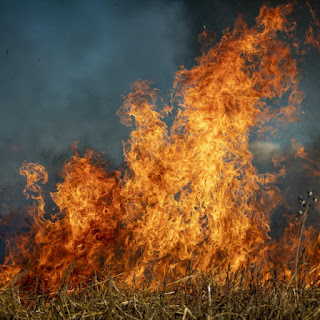Wildfires are warming the Artic and will lead to more wildfires in the future.
Researchers detail how the brown carbon released by burning biomass in the northern hemisphere is accelerating warming in the Arctic and warn that this could lead to even more wildfires in the future. Blazing wildfires are accompanied by vast plumes of brown smoke, made up of particles of brown carbon suspended in the air. This smoke poses health hazards, and can even block out the summer sun, and researchers suspected that it might also be contributing to global warming.
In 2017, the
Chinese icebreaker vessel Xue Long headed for the Arctic Ocean to
examine which aerosols were floating around in the pristine Arctic air and
identify their sources. The scientists on the vessel were particularly curious
about how brown carbon released by wildfires was affecting the climate and how
its warming effects compared to those of denser black carbon from
high-temperature fossil fuel burning, the second most powerful warming agent
after carbon dioxide.
Their results showed
that brown carbon was contributing to warming more than previously thought.
"To our surprise, observational analyses and numerical simulations show
that the warming effect of brown carbon aerosols over the Arctic is up to about
30% of that of black carbon," says senior author Pingqing Fu, an
atmospheric chemist at Tianjin University.
In the last 50 years, the Arctic has been warming at a rate three times that of the rest of the planet, and it appears that wildfires are helping to drive this discrepancy. The researchers found that brown carbon from burning biomass was responsible for at least twice as much warming as brown carbon from fossil fuel burning.
Like black carbon
and carbon dioxide, brown carbon warms the planet by absorbing solar radiation.
Since warming temperatures have been linked to the rise in wildfires in recent
years, this leads to a positive feedback loop. "The increase in brown
carbon aerosols will lead to global or regional warming, which increases the
probability and frequency of wildfires," says Fu. "Increased wildfire
events will emit more brown carbon aerosols, further heating the earth, thus
making wildfires more frequent."




Comments
Post a Comment